How invoice automation works (and benefits your business)

Let’s talk about invoice management. Here are the facts.
From 2021 to 2023, Stampli conducted three surveys of CFOs and other finance leaders on their invoice management challenges. In the first survey, The How, the Why, and the ROI of AP Automation, we asked leaders to name their biggest challenges.
The results are unlikely to surprise anyone who works in AP.
According to the survey, more than one-third of the leaders stated that their teams were overwhelmed by paper-based processes. Another third mentioned workflow bottlenecks, while just under 40 percent of the respondents said their teams spend too much time on low-value tasks such as manually entering invoice data into an ERP. (Some respondents selected more than one answer).
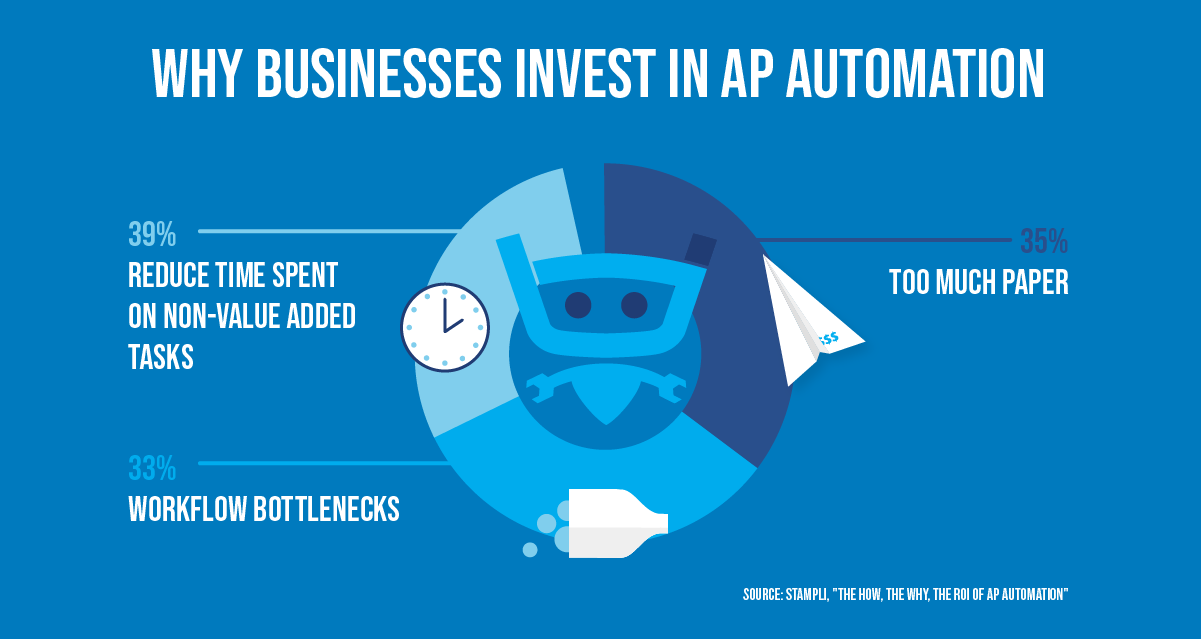
In their second survey, AP in 2022: Expectations, Technology, Opportunity, we surveyed finance leaders on what they saw as the future role of accounts payable. Again, this should come as no surprise to anyone in AP: just over three-quarters of respondents said they expected the responsibilities of their AP teams to increase, and 41% said they expected the increase would include an expansion of AP’s strategic role.
Finally, in their most recent survey, AP in 2023: Expectations, Technology, Opportunity, we asked leaders about the evolving role of AP and their expectations for 2023-2024. Just under three-quarters (71%) of respondents expected an increase in the number of invoices their AP teams would need to manage, with 27% saying the increase would be “significant.” And just over half (55%) of the respondents said they expected invoice complexity to grow, with one-quarter saying invoices would be significantly more complex.
Not to understate a point, but the writing is on the wall. CFOs, VPs of Finance, and Controllers face both a challenge and an opportunity when it comes to accounts payable automation.
Accounts payable is evolving fast, and AI-powered invoice management is central to the changes. Most CFOs already know the business case for AI invoice processing automation software: cost savings, efficiency gains, and improved cash flow.
But there’s another side to the story. Think of AP automation as complementary to your ERP. It brings an efficient way to automate invoice processing while directly integrating with your ERP and sharing information and communications. By making accurate and actionable real-time data and business insights available via the ERP, next-generation accounts payable software turns AP into a driver for business strategy.
The challenge is striking the right balance between greater efficiency and empowered decision-making.
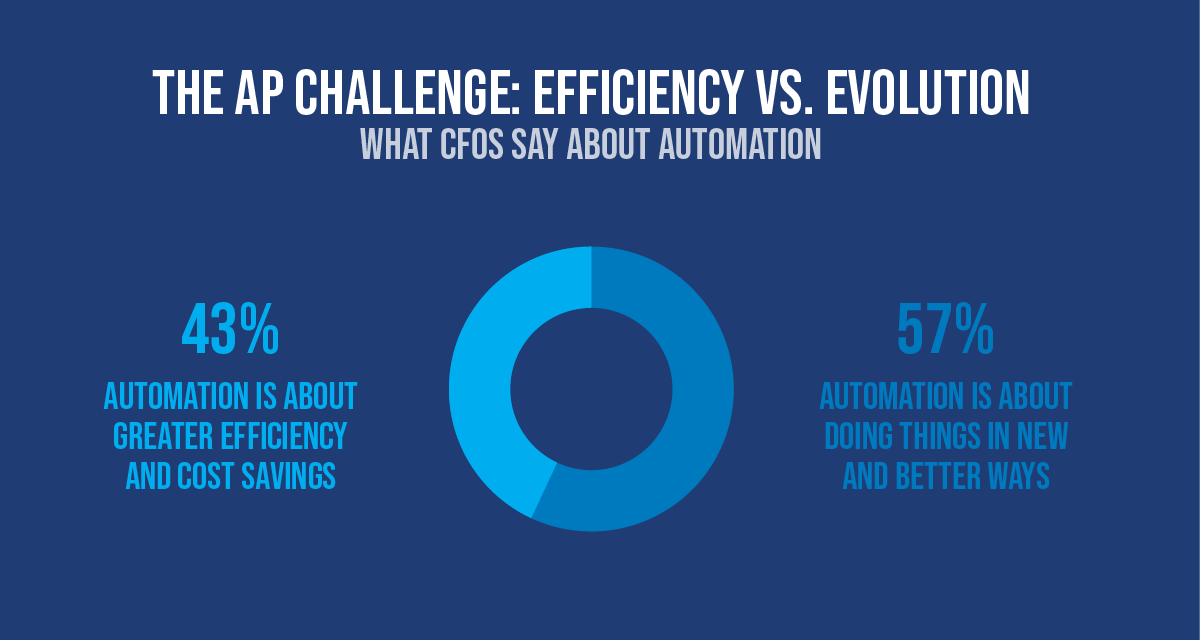
In this podcast episode, Ben Murray, Founder of The SaaS CFO, is joined by Nick Gerostathos, SVP, Chief Accounting Officer, and Corporate Controller at Talkdesk. They discuss how learning to adapt to new environments can help CFOs initiate and manage evolutionary change in their organizations.
AP is changing, and so are the challenges facing CFOs. Investing in a next-generation invoice management automation solution that integrates with your ERP can be evolutionary for your business. However, not all AP automation solutions are created equally – it’s crucial to pick the solution that best fits your existing processes and provides actionable insights. Get it right, and you’ll transform your AP department into a significant driver for your bottom line.
The key to choosing the right solution is understanding invoice management automation: what it is, what it does, and how to choose the right Accounts Payable Solution partner. Read on to get the facts.
How invoice automation works
To explain how invoice automation works, we’ll use the story of Jasmine, the CFO of a biotechnology company. Jasmine is looking for an automation solution that is suitable for her business and allows her to achieve her goals without having to change her existing AP processes. That means she needs to understand how automation works at each step of the invoice management lifecycle.
In a nutshell, invoice workflow automation lets businesses streamline, capture data from invoices and optimize manual invoice processes. Automated invoice processing has two main goals:
- Improve invoice processing time and efficiency to reduce processing costs and prevent errors and fraud
- Provide accurate real-time transaction data and share it with ERPs and accounting systems
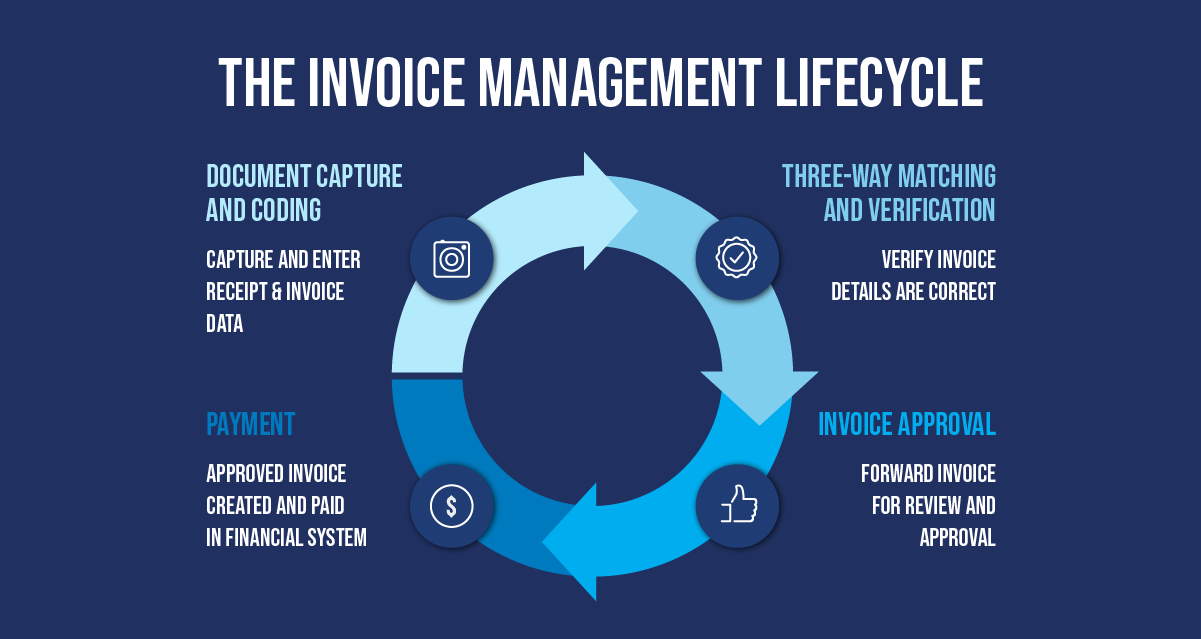
Jasmine works for a biotech company that creates orthopedic appliances and prosthetics, such as knee braces and artificial limbs. Their products are highly intricate and made from advanced materials, requiring exact specifications for each customer. They have an extensive supply chain that includes textile producers, material suppliers, fabricators and manufacturers, healthcare professionals, engineering and design firms, and others.
Since each device we create is custom-made and unique, they often order highly customized products and services from their suppliers, resulting in complex invoices that list each component and its price. They have no room for error. They are very precise in their costing because each product is unique and is priced individually.
To maintain profitability, they must accurately determine each product’s input costs. As a result, reconciling these invoices with their manufacturing process and purchase orders takes up a significant amount of time (and requires a lot of spreadsheets) for their AP team. Jasmine’s company uses an ERP system to manage production, inventory, and payments, but it isn’t integrated with their AP processes for invoice data entry, coding, and matching.
Like most businesses, their invoice lifecycle has four main steps. Let’s break out Jasmine’s challenges with each step and how automation helped her address those challenges. We’ll start at Capture, Code, & Send, which is when the vendor invoice arrives at the AP department.
Step 1: Document capture and coding
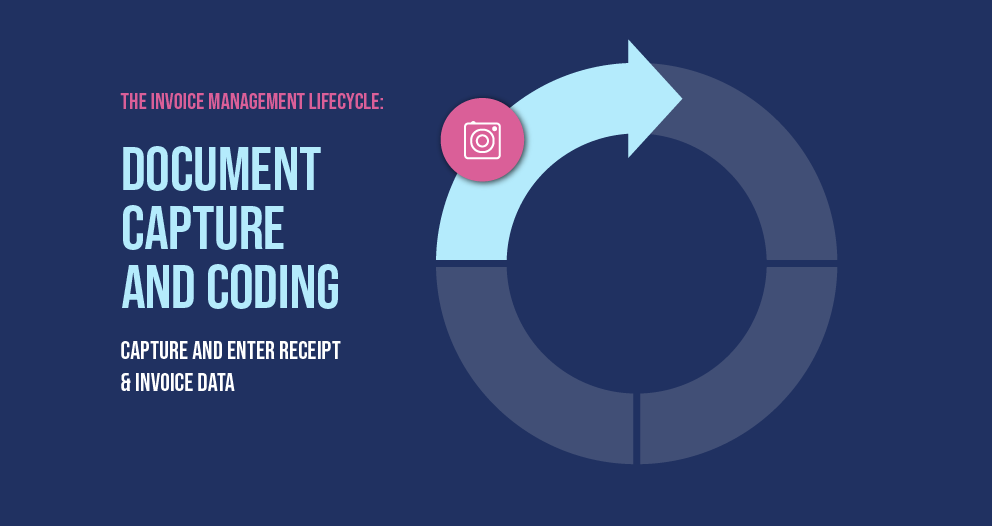
The invoice lifecycle starts when a vendor delivers the goods or services the company ordered. Their project managers inspect the delivery to make sure everything is included, meets their specs, and has the right pricing. If everything is ok, they will accept the receipt. If there’s a problem, they return the receipt to the supplier and request corrections.
Whenever the company recognizes revenue, typically when the shipment is made, or when service terms are agreed upon, or after services have been delivered,, the vendor sends a paper or electronic invoice. Jasmine’s AP team manually enters the invoice into the ERP, codes the invoice data, and then checks the line items against the shipping receipt and purchase order (PO).
How automation helps manage documents
Manually inspecting, keying in, comparing, and managing documents like shipping receipts, paper invoices, and more in an ERP is time-consuming and error-prone. Plus, although Jasmine’s AP team is meticulous, docs can get destroyed or lost in the shuffle.
Also, many ERPs have a workflow structure that can restrict AP teams’ ability to make informed decisions. They often restrict user access – which makes sense from a high-level perspective but limits AP teams’ access to the information and people they need to process invoices effectively.
Next-generation invoice automation solutions, like Stampli, optimize AP process efficiency and simplifying workflows and data sharing. For example, they use optical character recognition (OCR) and machine learning (ML) to scan and digitize paper documents or PDFs and share them with the ERP. This lets project teams easily access invoice and shipping information and compare it to their manufacturing requirements.
However, automation is only half the battle. Automating data extraction saves time, but there’s another benefit. Having real-time access to accurate line item data and costs means Jasmine’s company can correctly allocate their supplier costs to the right product and ensure they’re turning a profit.
To fully realize the benefits of invoice automation in an ERP environment, you need a solution that seamlessly integrates with your ERP while providing maximal benefits for your business and minimal changes to your existing processes and IT infrastructure.
One senior accountant says Stampli is the “best thing to happen to Accounts Payable,” saying they love “how easy and efficient Stampli has made our A/P process. It has cut back 80% of our processing time and significantly improved our accuracy…I picked Stampli because of how user-friendly it is, and they provided the exact solution to the problems we had with our A/P process.”
Step 2: Three-way matching and verification
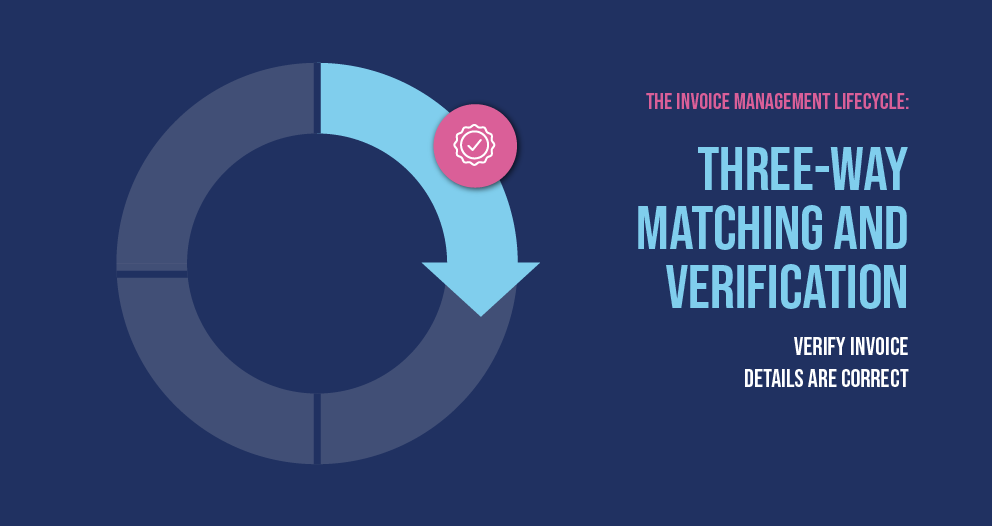
Once the invoice has been received, keyed in, and GL coded, Jasmine’s AP team compares it to the shipping receipt and purchase order to verify that the invoice contains the correct information. If the invoice matches the receipt and PO, they forward it for approval and payment.
Better three-way matching with automation
Due to the nature of their business, Jasmine’s company receives complicated vendor invoices and receipts with hundreds of highly detailed technical product descriptions. They need to verify each invoice in their ERP by matching them to the PO. However, their ERP handles PO-backed and non-PO-backed invoices and expenses differently, requiring the AP team to switch between multiple screens and menus and navigate through hundreds of line items to verify invoices. Her AP department takes a long time to validate each invoice manually, and errors are common.
Next-generation invoice automation software simplifies the process by automatically GL coding line items and comparing them against the PO and receipt. The system detects and flags any discrepancies it finds. It can also work with partial shipments, invoices, and POs, greatly affecting their ability to handle complex orders.
Stampli integrates with ERPs to auto-sync PO data and invoices and expedite matching. “[Stampli] is a big help with filling out most of the fields,” “which allows us to spend less time entering every line and more time to analyze,” says one Stampli customer, who added that by expediting PO matching, Stampli has “also increased the number of invoices entered per day.”
Step 3: Invoice approval
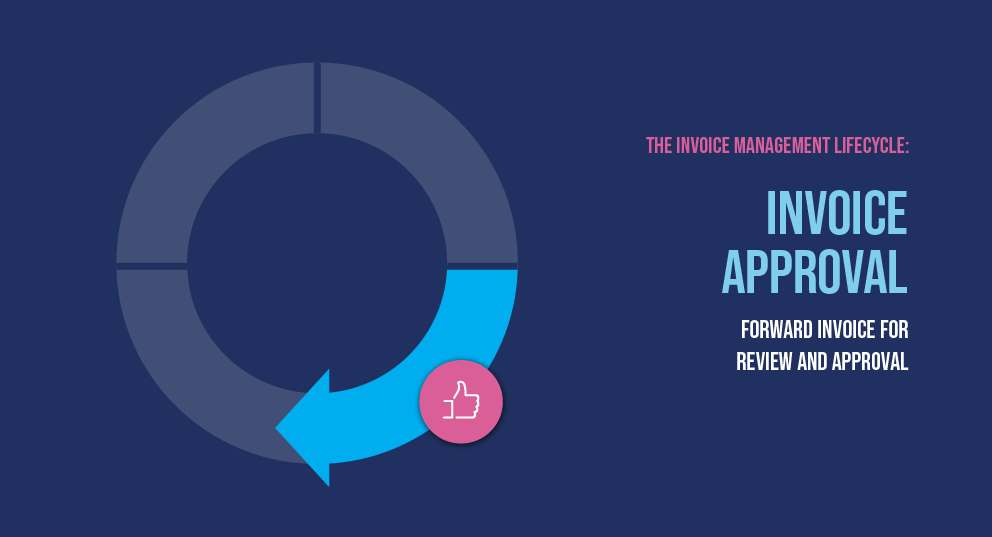
After Jasmine’s AP team matches the invoice, they forward it to the appropriate managers for approval. There are several different approval workflows at their company. For invoices that are associated with a specific product, their operations team checks that the invoice matches the actual materials and components used in the product to confirm they match. Next, their finance and revenue assurance team reviews the pricing to ensure it’s correct and the product is priced correctly.
For general business purchases, invoices are routed directly to their finance team for approval. After the invoice is approved, their team forwards it for payment.
Streamlining approval routing and workflows with automation
Because their company’s approval process is so complex, invoices are often rejected because they contain errors or the approver needs more information. This slows down the payment process and often results in suppliers charging late payment fees. Also, if their product team can’t verify the costs for a specific product, they can’t easily confirm if the company is making a profit. Plus, emails sometimes get lost or stuck when someone is on vacation.
Invoice automation automatically routes the invoice to the correct approver with all the relevant information attached. Approvers can easily review the invoice and make sure everything is good before they approve it. If someone forgets to approve the invoice, the system will remind them. Jasmine’s AP team can also easily modify their approval routing if one of their approvers is on vacation or out of the office.
By streamlining approval processes and centralizing communications, invoice automation solutions like Stampli save busy approvers a lot of time – and a lot of headaches. “Since we have started Stampli, my production has gone up,” commented one Stampli user. “The work flow is more main streamed. All the conversations and approvals are documented and in one place. Makes it easy to see it all in one place.”
Step 4: Payment
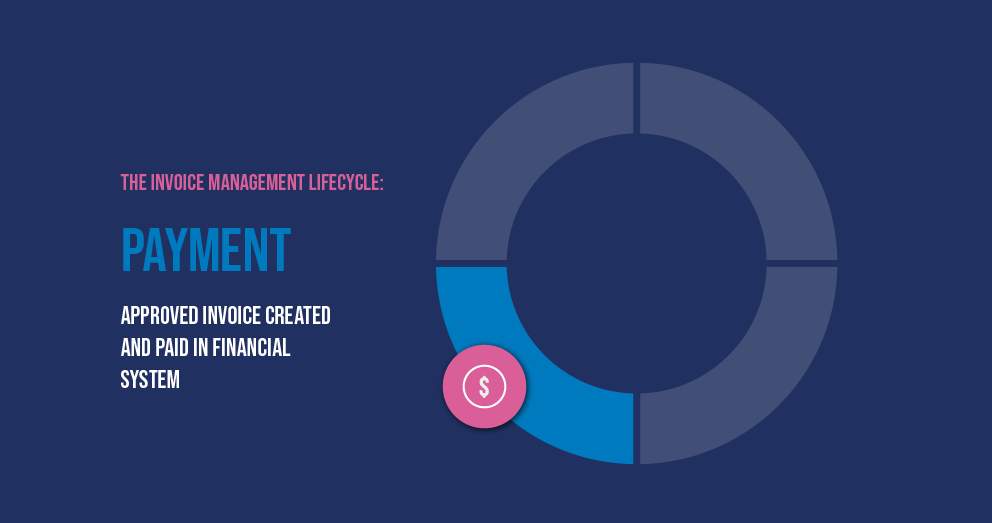
After approval, the invoice goes to Jasmine’s finance team for payment. Payment follows the contract terms with each supplier and is usually by check or ACH. Because the company works so closely with their suppliers, many of whom are small businesses or individuals, they use several different payment processes. For example, it’s not unusual for one of their managers to pay a vendor by credit card and submit a statement to the finance team for reimbursement.
How invoice automation improves vendor payments
Although Jasmine’s company has good relationships with their suppliers, the challenges associated with their unstructured payment processing can strain those relationships, particularly when they are late paying vendors. Their ERP is also very complex, so their AP team struggles to find information and navigate workflows, making it hard for them to process different payment types on time. They also have limited oversight over erroneous payments, so they’re unsure how much money they might be losing to mistakes.
Invoice automation ensures invoice accuracy and fast approvals, providing finance teams with the right information to make payments on time. By incorporating a payment automation solution, Jasmine can unify her company’s scattered payment methods into a single system, eliminating ad-hoc payments. A payment automation solution like Stampli Direct Pay can also synchronize payment data with ERPs, which makes tracking costs and managing cash flow easier and ensures profitability.
Stampli Direct Pay centralizes vendor payment methods so users can “process invoices and payments all in one place.” Customers like that processing payments with Stampli reduces payment times, saying, “The amount of time it takes us from start to finish for payments has gone from about 5 days to 2 days in most cases, some days even same day.”
Turn invoice management into a driver for business strategy
Jasmine’s business has benefited greatly from implementing an invoice automation solution that seamlessly integrates with their ERP. Automation greatly improves their process efficiency and accuracy, resulting in cost savings and reduced frustration for employees and vendors.
In addition, by providing accurate and detailed transaction data, invoice automation helps the company verify costs and ensure products are profitable. Armed with this costing information, they can forecast and manage their profitability and make informed strategic decisions about R&D, supplier management, and product marketing.
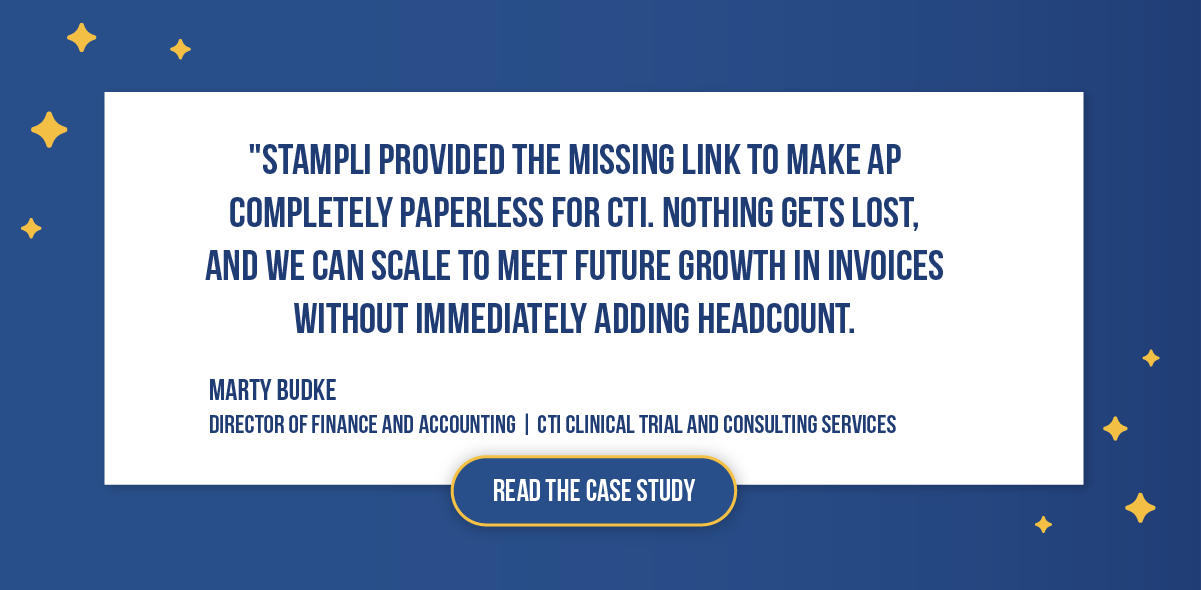
Striking a balance between efficiency gains and strategic transformation means looking at invoice automation in an evolutionary way – going beyond process optimization to see the deeper value an AP automation solution can bring your business. For Jasmine, that meant finding an AP solution provider that was easy to work with, flexibility enough to meet her unique business needs, integrated with her company’s ERP, and delivered proven results.
Jasmine chose Stampli. With a proven track record of helping companies enhance their accounts payable processes, obtain valuable business metrics and analytics through user-friendly dashboards, and transform accounts payable into a powerful strategic driver, Stampli’s Accounts Payable Automation solution met her company’s needs and more.
It begins with Billy the Bot, Stampli’s industry-leading advanced AI.
Billy the Bot
Not all invoice automation solutions are the same. Unlike other solutions, Stampli features Billy the Bot, its advanced AI assistant. Billy quickly learns the ins and outs of your invoice management processes, making it a valuable tool for AP teams looking to streamline their workloads. It adapts to your unique business structure, taking on time-consuming manual tasks like invoice capture, coding, approvals, fraud detection, and syncing invoice data to your ERP.
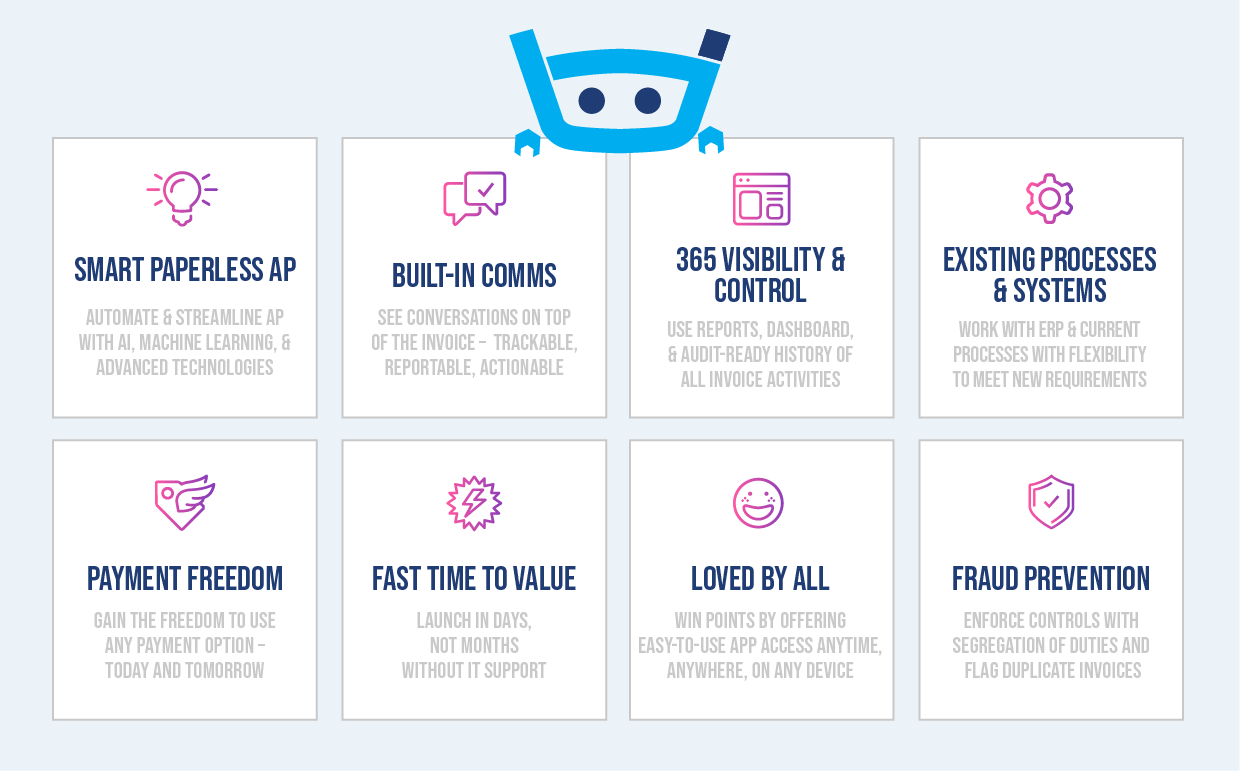
Billy uses machine learning to capture and code transaction data from paper or electronic receipts and can understand all line types, including general ledger, charges, fixed asset lines, and resources. He can handle partial payment workflows and multiple POs and support invoice management for multiple subsidiaries, locations, currencies, and tax structures. Billy can also identify errors and signs of fraud that are often easily missed, such as slight changes to invoice details or inflated line items.
By centralizing all invoice communications on the top of the invoice, Billy facilitates smooth communication and collaboration across the invoice workflow. Plus, Stampli features seamless integration with over 70 ERPs and accounting systems to provide a single source of truth for transaction data across the whole organization.
“Stampli has made a world of difference in processing time for our company,” a Stampli customer raves. “The ability to interface so easily with our existing ERP has made our process more efficient. The customer service provided by our team has also been exceptional!”
A force multiplier for your AP department
You can have it both ways: optimize invoice processing workflows, and get accurate and actionable AP data. Stampli is the best choice for flexible and powerful invoice processing with your ERP. Featuring pre-built integrations with major ERPs and accounting systems, Stampli syncs all core accounts payable data and processes.
A G2 Grid Accounts Payable Leader, Stampli is recognized for fast and easy implementation, exceptional customer relationships, and delivering real results.
Customers call Stampli “a force multiplier for our accounting department,” with one customer asserting, “[Stampli] has allowed us to process invoices faster, obtain approvals more efficiently, and gain greater visibility and control over our financial operations. I highly recommend Stampli to any organization looking to streamline their accounts payable process and achieve greater efficiency!”
Stampli: invoice automation evolved
Stampli is the only Accounts Payable Automation solution specifically designed to meet the unique needs of AP departments. It streamlines invoice management, eliminating the need for external communication, ad-hoc workarounds, and manual AP tasks. Stampli provides complete visibility into every transaction, making audits and month-end close easy and informing strategic business decisions.
The case studies speak for themselves. Stampli delivers real results by helping businesses optimize invoice processing workflows without changing their business processes or reworking their ERP system. Contact us today to set up a free demo.

